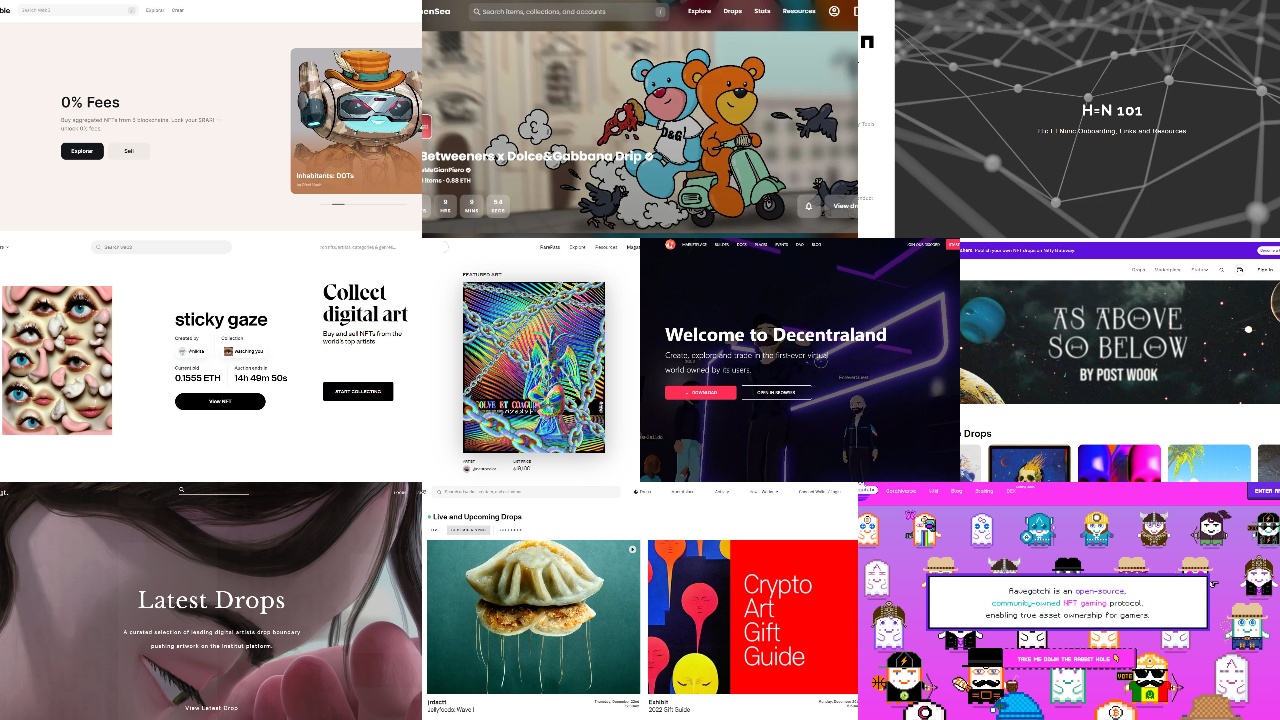When Christie’s debuted in cryptocurrency, the prestigious auction house managed to sell (to buyer Metakovan) a Mike Winkelmann NFT, aka Beeple, for a staggering $69.3 million. A record for a digital work, in this case a giant JPG collage of 5,000 surreal images called Everydays: The First 5,000 Days. Following this paid sale on Ethereum in March 2021, non-fungible tokens have become increasingly attractive to collectors and emerging artists.
With far fewer barriers than the traditional art market, with NFT it becomes extremely easy to get your name out there and earn a lot of money from the sale of your works. Even characters like Damien Hirst have jumped on this bandwagon. Thanks to the incredible growth of crypto art, the markets have experienced a real boom. Even Sotheby’s has decided to start selling the works of Pak, Elon Musk’s favorite digital artist. But what are the best markets to buy non-fungible tokens? These are the top 10 digital art markets by volume, number of collectors and sales, and growth margins.
OpenSea
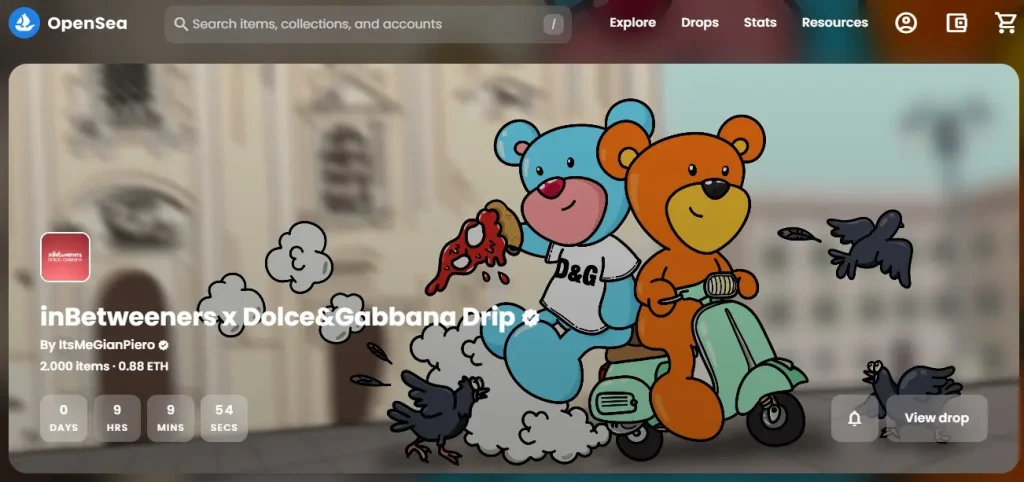
If you define the largest decentralized NFT market: in effect, offer a wide range of non-fungible tokens, including Art Infts, Crypto Domains, Virtual Worlds, Trading Cards, Sports Cards and Miscellaneous Collections. Not only: your OpenSea can buy, sell and exchange pure oggetti from the collection and digital games supported by a blockchain like Ethereum. The platform practices the policy of the smart contract: in custody, no central authority detains the custody of the operation. The numbers of OpenSea are impressive: 4 million art eggs in the catalogue, 700 diverse programs and popular assets such as Axis and CryptoKitties.
Nifty Gateway
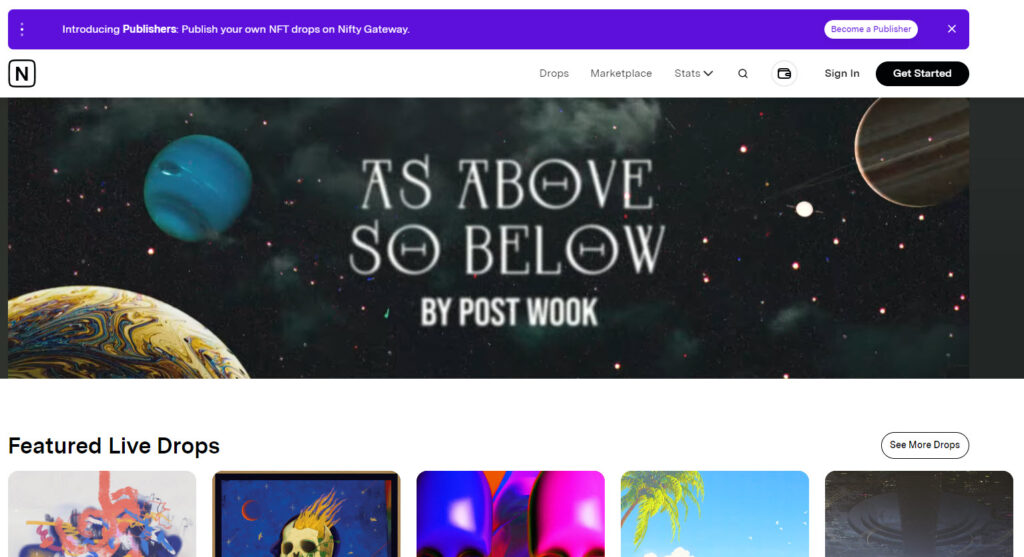
To date, Nifty Gateway is the main marketplace for NFTs, founded precisely with the intention of making non-fungible tokens accessible to everyone. It is no coincidence that it was one of the investments of the twins Cameron and Tyler Winklevoss. The platform offers limited edition collectable works in the form of curated drops (chosen by marketplace curators) and verified drops, selected directly by the artists. Auctions take place every three weeks. After the initial drop of a collection is closed or depleted, it is possible to obtain the Nifties of a given collectiononly on the marketplace. On the Nifty Gateway you can find works by famous artists such as Steve Aoki, deadmau5, Grimes, Kenny Scharf and Beeple or the highly sought after monkeys of the Bored Ape Yacht Club. Payment can be made by credit and debit card, Gemini Balance and prepaid ETH. There are no gas fees.
Rarible

Launched in 2020 by Russian programmers Alex Salnikov and Alexei Falin, Rarible is based on a software that allows artists and digital creators to issue and sell personalized cryptographic assets (art, photography, games, music, domains, memes and much more) that represent the ownership of their works. The marketplace is both a marketplace for these NFTs and a distributed network built on top of Ethereum to enable intermediary-free trading. Crypto artists must submit their creations for approval, but Rarible allows anyone to be included in its catalog. It also allows creators to specify their own royalty rate for secondary sales. Rarible also created RARI, its own cryptocurrency and first governance token in the NFT ecosystem. The ultimate goal is to evolve and transform into a DAO (Decentralized Autonomous Organization),
Super Rare
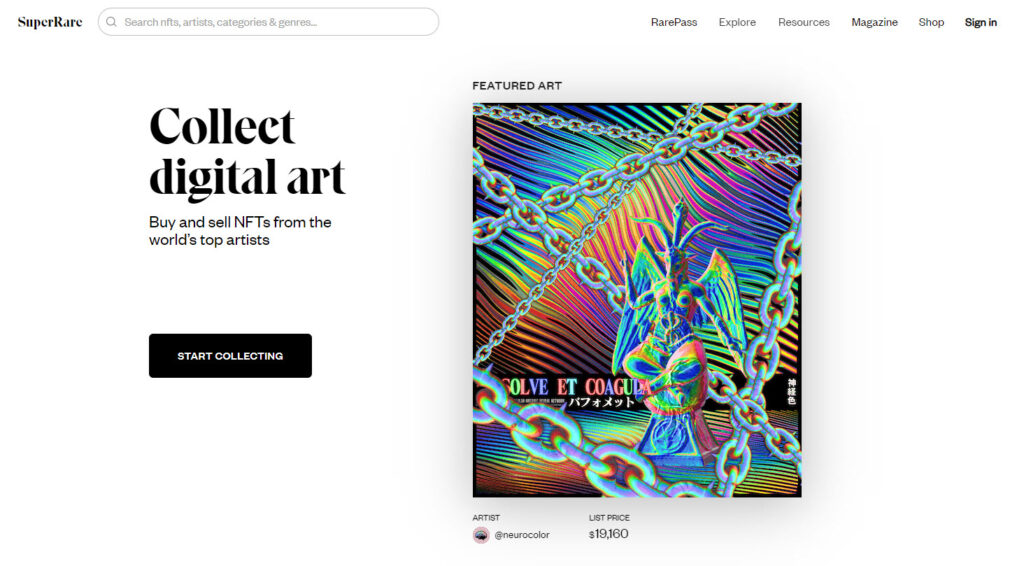
Online shopping for NFTs on SuperRare focuses specifically on the “real” price (i.e. the price that spans the entire history of buying and owning a collectible) of unique, single-copy digital artworks. It is a peer-to-peer market built on Ethereum that presents itself as “the meeting between Instagram and Christie’s”: the curators select a limited number of artists, when the artwork is sold the author receives 85 % of what the buyer paid for the token and the rest is charged as a fee. For secondary sales, the creators always receive a 10% royalty as a form of passive income (the so-called resale right grant) because the work continues to be traded on the market. All transactions are made using Ether, precisely to trace the origin and process of the works.
Foundation

More a creative community open to artists, collectors and curators than a marketplace, Foundation is an experiment in the creative economy : the mission declared since its launch in February 2021 is “to hack, subvert and manipulate the value of creative work”. On Foundation, it is the artists themselves who select and invite other colleagues to join, mint NFTs, experiment with cryptography and organize auctions. This is where Nyan Cat’s 8-bit animated gif sold for $590,000. Prominent personalities such as Aphex Twin, Zach Lieberman, Kim Laughton, Nadya Tolokonnikova of Pussy Riot and Dom Hofmann are part of the community. Also in this case there is a contribution for resale right of 10%.
Makers Place
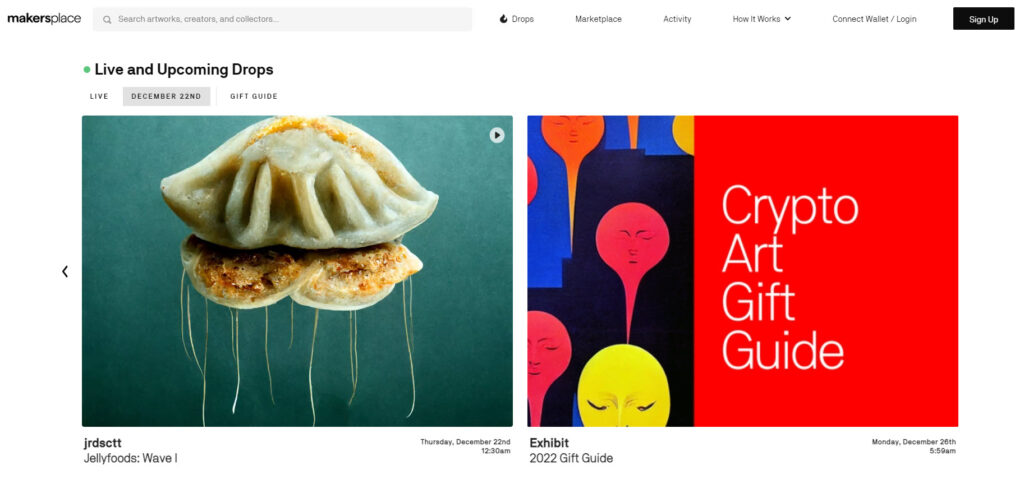
To find, buy and sell the most curious and famous NFTs on the market, MakersPlace is the right place. Open to all types of artists, photographers and writers, this marketplace is not only a place for creators and collectors, but also “a place for peace of mind”: the MakersPlace team personally verifies each token on the site to ensure protection to the artists and the authenticity of the pieces to the collectors. For each sale, the platform collects 15% of the value; as usual, the royalty on secondary sales is 10%. Behind MakersPlace are Executive Chairman Dannie Chu (former leader of Pinterest) and Chief Executive Officer Craig Palmer, former CEO of Fandom and Gracenote.
Decentraland
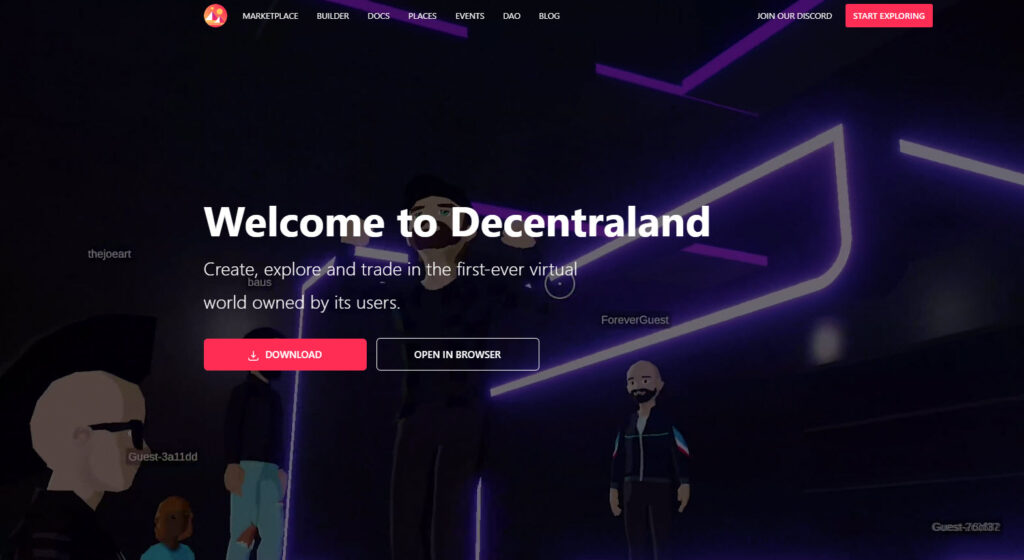
What Rarible’s goal is, Decentraland has already achieved it: the first fully decentralized virtual world in which users can create and earn on everything they invent, design, process, own and sell. Built on the model of the DAO, the decentralized organization run by an autonomous agent, Decentraland allows the community to propose and vote on policy updates, future auctions and NFT whitelistings . Along with digital goods, there’s also the option to purchase customizable wearables and virtual terrains. Owned assets are stored in Ethereum-based smart contracts.
Aavegotchi
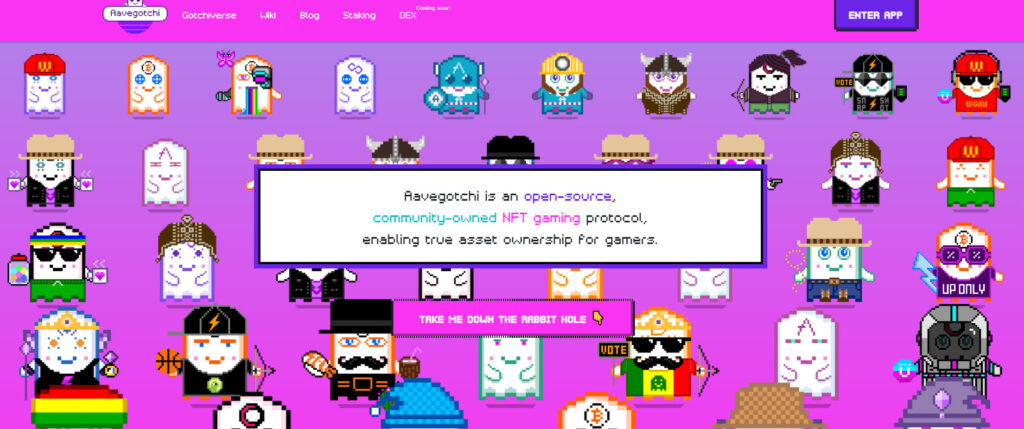
For game enthusiasts and rare NFT hunters, Aavegotchi is a little paradise. Aavegotchis are digital pets like Bandai’s Tamagotchi and live on the Ethereum blockchain. Basically, they are unique playable NFTs whose value is defined by three characteristic traits: spiritual strength, clothing and features. Again, at the base there is a DAO, an active community, a governance token (GHST), a game currency (Gotchus Alchemica), a liquidity reward DEX (GLTR) and also a metaverse, the Gotchiverse: a play -to-earn open-world RPG governed by the players themselves. The creators are those of Pixelcraft Studios, the studio led by Jesse Johnson, famous for the Bullionix collection.
Institut
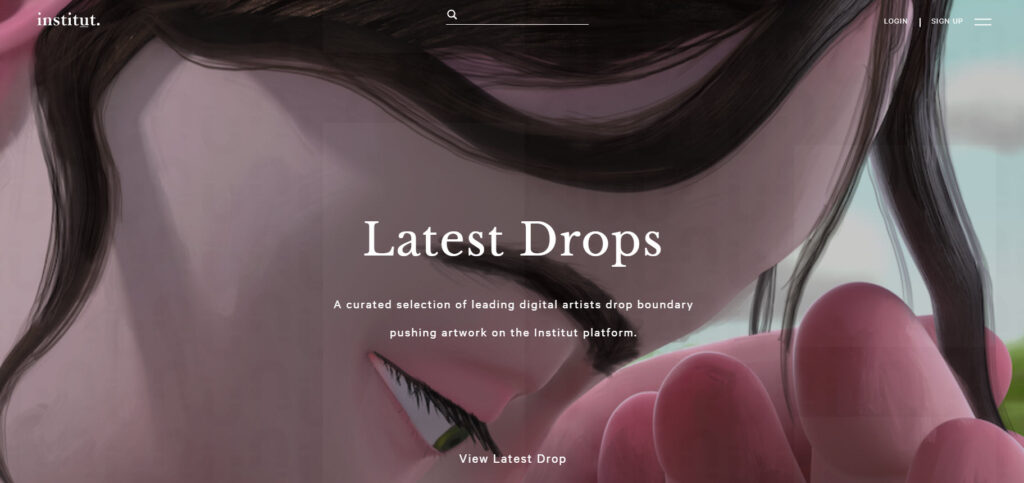
As an art marketplace for NFTs, Institut is unrivalled. This project involves specialists in the curation and development of large traditional art collections devoted to digital. The Institut’s mission is to broaden the offer and audience of contemporary art and enhance the work of artists using new technologies. Built on the Ethereum blockchain, the Instituteis a shared space for classic collectors and crypto collectors. For greater artist security, original works are archived using the decentralized IPFS system. But Institut uses both centralized and decentralized functions to reduce the carbon emissions generated by mining. Finally, creators are protected to the max: zero gas costs and a fixed 10% royalty on resales.
Hic et Nunc 101
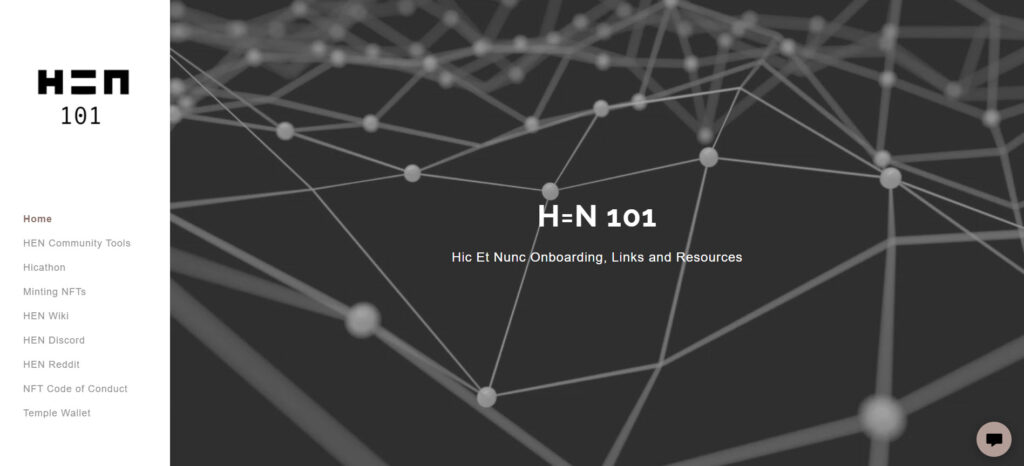
Here and now: Hic et Nunc 101 is an eco-friendly platform that thinks about the future, taking advantage of the open source Tezos blockchain precisely because it is energy-efficient and environmentally friendly. HEN 101 is different from other marketplaces for another reason: it doesn’t have an invitation or gatekeeper system, simply allows artists to produce NFTs in a constant stream of images, audio experiments, interactive objects and other media. It is a space open to experimental creators. OBJKTs can be minted and traded on the platform without permission, creating an alternative crypto-economy. Seller information is commonly verified before transacting. Launched in 2021, Hic et Nunc 101 continues to grow thanks to the work of a group of volunteer developers.
